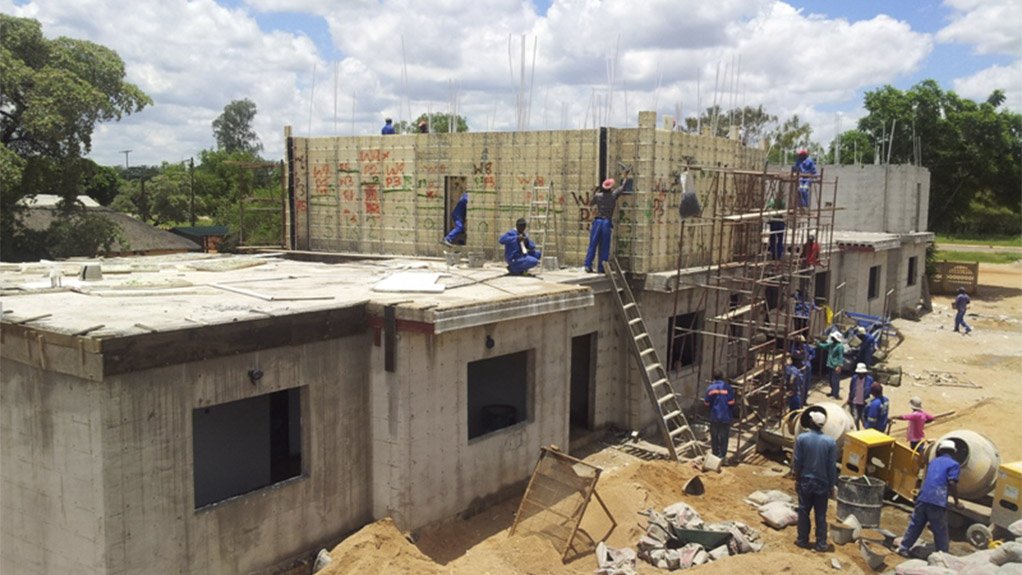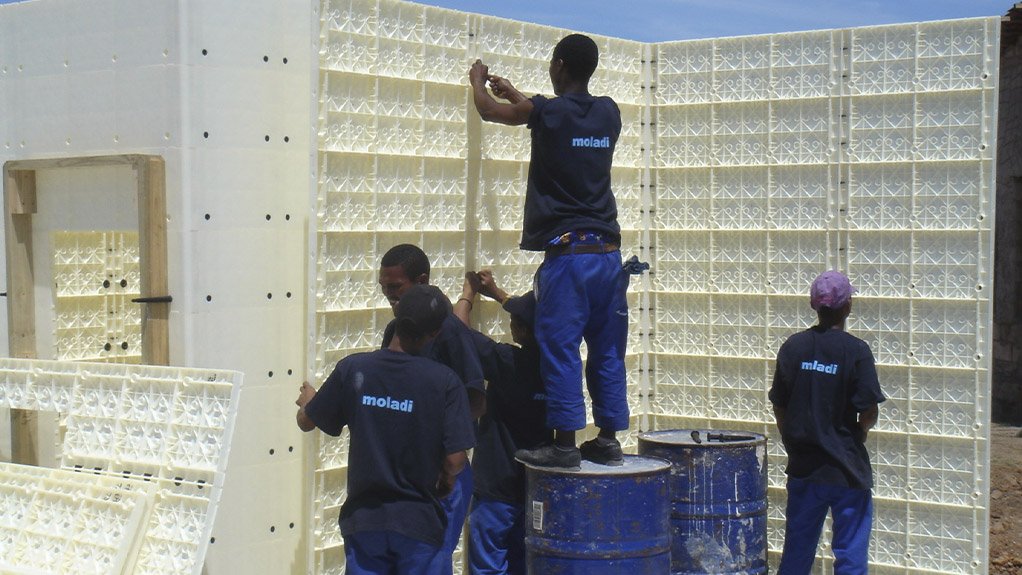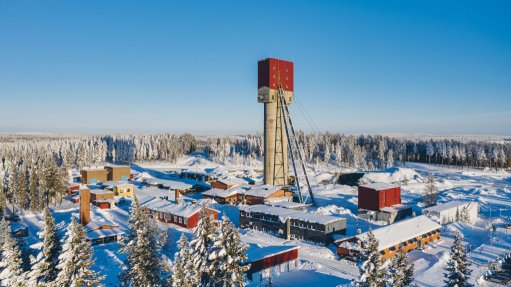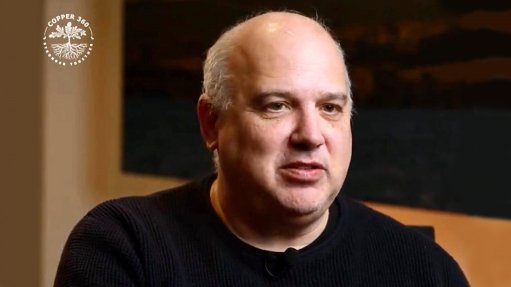Superior building delivers quality houses quickly and cost-effectively
The multi-award winning Moladi Building System is enabling houses and other structures of a superior quality to be built in record time and at a fraction of the cost of conventional building methods. This is by successfully addressing the many inefficiencies of traditional construction practices. These, combined with the variables and unknowns on a typical building project, lead to cost overruns and delays. Moreover, they negatively impact the overall quality of the final structure, increasing total cost of ownership.
The Moladi Building System provides absolute control over the entire construction process. There is no material waste, such as broken bricks, and duplication of work, for instance having to replaster chased walls. Facilitating high levels of precision, it also eliminates errors and, therefore, the need to rebuild or correct mistakes which costs time and money. Moladi houses are also more durable. A Moladi wall has a compressive strength of 15N/mm2 which significantly exceeds that of clay brick and concrete block walls. Houses that have been built with the Moladi Building System, therefore, continue to add value over their entire lifecycle with only minimal upkeep.
Moladi Building System has been refining its processes since 1987 when the company built its first house in South Africa. This was long before the establishment of the National Home Builders Registration Council (NHBRC). “In those early years, we had to establish our own yardstick for quality. We raised the bar very high for ourselves and we still build according to the ‘Moladi Standard’ to this day, supported by our membership of NHBRC and Agrément South Africa accreditation. All that has changed since then is that we have become considerably better at what we do. We have honed our competencies to further reduce construction costs and time, while also improving the overall quality of our workmanship,” Hennie Botes, Chief Executive Officer of Moladi Building System, says.
A Moladi building site mimics a typical high-performance production line which provides, among other benefits, cost efficiency, hard scheduling with predefined productivity speeds and performance visibility.
Manufactured at the company’s factory and then offloaded on site, reusable plastic modules are connected to form lightweight mould panels. The panels are fixed into position to create internal and external wall enclosures that form the void or cavity where the cement mortar mix will be placed. The panels are placed on top of engineered raft foundations, which can be adapted quickly and efficiently to most ground conditions. They are also accurate and cost-effective to construct and can accommodate any housing or building design. Engineered steel reinforcing, window and door block outs, conduits for electricity wiring, plumbing pipes, roof ties and other fittings are then placed and fixed
inside the wall cavities. The cavities are now ready to be filled with a mortar mix. It consists of common materials, such as cement, water and river sand that are easily sourced and mixed on site or at a local concrete batch plant. There is in addition to a special Moladi cement admixture, which aerates the mortar to provide good thermal and waterproofing properties for the walls. After the mortar mix has set the following morning, the formwork is removed. An exceptionally smooth surface finish is achieved, thereby, also doing away with the need for plaster. These walls can immediately be painted with a water-based acrylic paint. The same mould is then re-assembled on an adjoining foundation and the process is repeated to complete another structure. An engineer-certified roof, as well as the door and windows are then installed. This is followed by final finishings, including the fitting out of lighting and sanitaryware. The house is then ready to be occupied.
This process is completed without the need for machinery to transport materials from the laydown to working areas and to lift and place them. Approximately twenty low skilled workers can erect a mould for a 74m2 area in as little as four hours. This includes door and window blockouts for later installation, electrical and plumbing fixtures, reinforcing, roof ties and truss block-outs. The filling of the formwork is completed in two hours, and it takes the same time for them to remove the forms the following day after the mortar has set.
Notably, a Moladi house is about 30% more cost-effective than traditional construction methods. There are also no hidden costs. A known cost of kilogram of plastic is placed into a hopper. It is heated and melted to fill a mould with a specific volume in a predetermined time. When the mould is opened, the exact cost involved in producing the form is established. There is also no doubt regarding the cost of the final shell of the structure when the moulds are filled on the construction site.
“Genius is simplicity. Moladi Building Systems is not alternative building technology. Rather, it is a superior building system. This is evidenced by the significant construction costs and time savings that are achievable with the Moladi Building System, while the quality of the many houses and other buildings that we have built speaks for itself,” Botes concludes.
Comments
Press Office
Announcements
What's On
Subscribe to improve your user experience...
Option 1 (equivalent of R125 a month):
Receive a weekly copy of Creamer Media's Engineering News & Mining Weekly magazine
(print copy for those in South Africa and e-magazine for those outside of South Africa)
Receive daily email newsletters
Access to full search results
Access archive of magazine back copies
Access to Projects in Progress
Access to ONE Research Report of your choice in PDF format
Option 2 (equivalent of R375 a month):
All benefits from Option 1
PLUS
Access to Creamer Media's Research Channel Africa for ALL Research Reports, in PDF format, on various industrial and mining sectors
including Electricity; Water; Energy Transition; Hydrogen; Roads, Rail and Ports; Coal; Gold; Platinum; Battery Metals; etc.
Already a subscriber?
Forgotten your password?
Receive weekly copy of Creamer Media's Engineering News & Mining Weekly magazine (print copy for those in South Africa and e-magazine for those outside of South Africa)
➕
Recieve daily email newsletters
➕
Access to full search results
➕
Access archive of magazine back copies
➕
Access to Projects in Progress
➕
Access to ONE Research Report of your choice in PDF format
RESEARCH CHANNEL AFRICA
R4500 (equivalent of R375 a month)
SUBSCRIBEAll benefits from Option 1
➕
Access to Creamer Media's Research Channel Africa for ALL Research Reports on various industrial and mining sectors, in PDF format, including on:
Electricity
➕
Water
➕
Energy Transition
➕
Hydrogen
➕
Roads, Rail and Ports
➕
Coal
➕
Gold
➕
Platinum
➕
Battery Metals
➕
etc.
Receive all benefits from Option 1 or Option 2 delivered to numerous people at your company
➕
Multiple User names and Passwords for simultaneous log-ins
➕
Intranet integration access to all in your organisation























